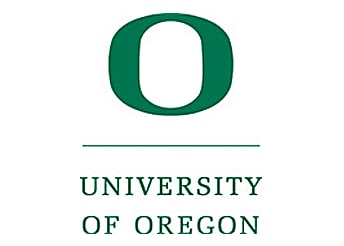Which merit packages attract the best students?
University of Oregon uses SAS® predictive analytics to deploy merit aid more effectively
What's the best way to distribute merit aid to highly qualified incoming students so that they actually enroll in your university? Using SAS® Enterprise Miner™, the University of Oregon discovered a formula that works.
The university annually distributes more than $35 million in institution aid to its students, of which a large portion is set aside for incoming freshmen. Its approach for awarding aid had been fairly simple: Every accepted in-state student received an annual $1,000 or $2,000 scholarship if they had a high school grade point average at or above 3.7. For out-of-state students, the criteria were similar – although merit awards ran as high as $7,000.
College officials were concerned the current method wasn't the best way to attract top students and ensure that they enroll. "Our university leadership asked us to find out if we were using our merit aid most effectively," explains Jonathan Jacobs, Director of Enrollment Management Research. Jacobs was then asked to take a deeper dive into the data to better understand the dynamics of first-year applicants who had been accepted and were eligible to receive merit aid, as well as the factors that affected whether or not they enrolled. Was there a way to better predict which students were more likely to accept and enroll? Was there a better way to determine the amounts of merit aid?
"We could see instantly what would happen if we gave them $5,000, or $4,000 or $6,000. SAS allowed me to dive in and model exactly what kind of aid program we could afford that would also maximize our enrollment of high-quality students."

Jonathan Jacobs
Director of Enrollment Management Research
Data mining to understand students
Jacobs had already used SAS to glean insights into determining how to improve the university's yield (the percent of accepted students who enroll). He had also studied the characteristics of students who succeeded once they enrolled. Now the task was to figure out how merit aid could be tweaked to positively influence enrollment rates, as well as more accurately predict the university's yield. For this analysis, he opted to use SAS Enterprise Miner to more quickly develop models and predict likely outcomes.
Oregon administrators were concerned that GPA alone wasn't a sufficient indicator of high-caliber students, since grading varies from high school to high school. In some cases, students were meeting the GPA requirement yet had a very low SAT score. Jacobs incorporated SAT scores into the model. Next, Jacobs looked at how merit aid affected decisions by in-state and out-of-state students to attend Oregon. It turned out that out-of-state students, who pay substantially higher tuition rates, were less influenced by the amount of merit aid. It was another story for in-state students. The amount of merit aid was indeed a key factor.
Jacobs found logistical regression and neural network modeling worked best for his particular situation. He could easily export the results from the models to Excel, where he created a financial aid award simulator based on work by Doug Anderson at Indiana University. When Jacobs met with his stakeholders, he could show them – on the spot – how awards, headcount and diversity would change at differing levels of financial award.
"We could see instantly what would happen if we gave them $5,000, or $4,000 or $6,000. SAS allowed me to dive in and model exactly what kind of aid program we would be able to afford that would also maximize our enrollment of high-quality students," Jacobs says. The result is that the University of Oregon increased its top merit aid offering from $2,000 to $5,000 a year to in-state students with a 3.8 GPA and a minimum SAT score of 1200. Aid amounts were also increased to other qualified in-state students. While there was a modest increase to the top nonresident merit award, "We didn't increase them as much because the dollars are more effective when awarded to residents. This is ideal because as a public institution, Oregon residents are the population we serve first and foremost," Jacobs says.
Why SAS® works
Jacobs, an experienced SAS programmer, says that coding these models outside of SAS would have taken too long. SAS Enterprise Miner worked well in this dynamic environment and provided an easy-to-use point-and-click interface. It had several ready-to-use models, and Jacobs found that its neural network feature (a type of flexible, nonlinear, regression model that is particularly good at making accurate predictions about real-world problems) was well-suited to this problem. And, "I could explain it visually, through mapping and flow charts." Jacobs also found it easy to export results to Excel, where he created the financial aid award simulator that he used to share the results with his stakeholders.

Challenge
Distribute merit aid in a way that encourages high-quality students to enroll at the University of Oregon.
Solution
Benefits
University of Oregon was able to determine the best merit aid package to attract and enroll top first-year students.
